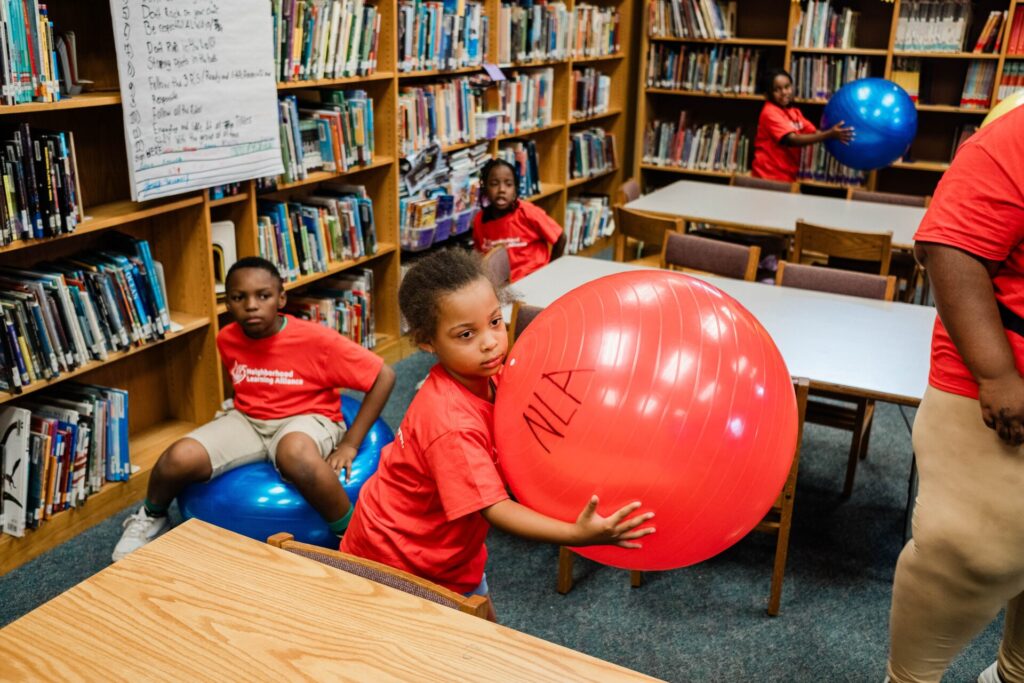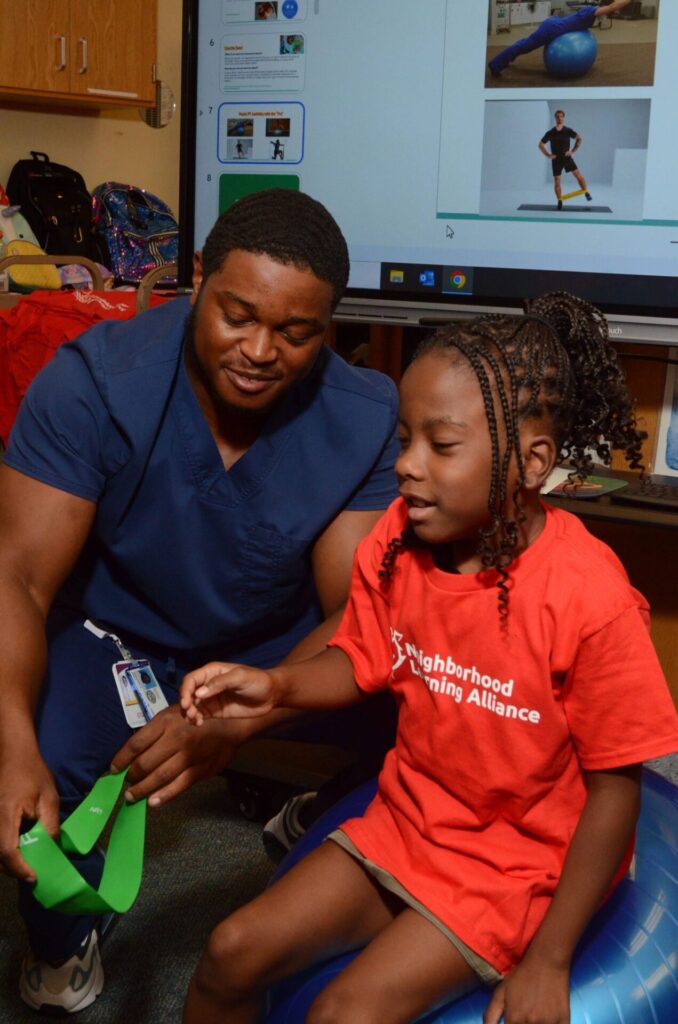On the list of typical summer camp experiences — swimming, nature walks, arts-and-crafts projects involving popsicle sticks and dry macaroni — you rarely hear anyone mention designing prosthetic limbs.
But this year, thanks to an innovative project funded by a Moonshot Grant from Remake Learning, Pittsburgh’s Neighborhood Learning Alliance (NLA) had elementary schoolers doing just that.
The goal of this ambitious project, titled Energizing Tomorrow’s Future Career Leaders, was to create interactive design labs where low-income and minority students would gain STEM knowledge and skills, learn about health and wellness, and discover pathways to lucrative career fields they might never have considered.
As with so many learning innovations in Pittsburgh, the project was dreamed up and built through collaboration and a willingness to experiment.
NLA collaborated with partners including Assemble on curriculum design, and worked closely with healthcare and sports medicine professionals from the University of Pittsburgh, the Pittsburgh Steelers and other local organizations to find an engaging approach to STEM learning that could be used across a range of age groups and out-of-school-time settings.
“We were really trying to figure out: What does this process look like? How do you bring in people whose skill set is curriculum, as well as outside people who are just professionals in that field?” says NLA Executive Director Kashif Henderson.
Working together, Henderson says, NLA and their partners have been “taking professional information and turning it into something that everyday people — a mom, a dad, a community member, a college student — can really implement.”
What They Did
“This spring really was focused on development,” he explains. “What are we learning from our professionals in the field? How can we turn it into something that will engage and teach students?”
By June, the pilot program was ready to launch.
College freshman Sharika Neopaney worked with the youngest summer campers — kindergarteners and first-graders — introducing them to the idea of physical therapy by first helping them to learn the names and locations of various body parts.
“We would lay them down on this big sheet of paper, and we would trace them,” Sharika says, “and then have them label their hands and their feet and their eyes. And then they had free time to draw their faces.”
Though she had spent her high school years attending NLA classes, including college-level courses, Neopaney was impressed at how advanced this program was — and how quickly young kids picked up the material.
“What I found most amazing was seeing these little kids be able to create these big things,” she says, “I would have probably never imagined my 5-year-old self learning about body parts and what prosthetics are.”
As camp counselors, Sharika and her sister, Risthika Neopaney, learned to use the 3D-modeling program Tinkercad, alongside the students. With it, they designed prosthetic hands and other body parts.
They also helped out with a range of health-related lessons, including cooking demonstrations that taught the students about nutrition.
“The students were really, really excited about the cooking,” Risthika says. “And they ended up liking food that they wouldn’t normally eat at their home.”
One young camper named Trey “talked about how he hated salad” when the kids were told they would be making a salad with a visiting expert on nutrition. But after helping make the dish and tasting it, Risthika says, “he was like, ‘I love salad! This is so good.”
Along with the learning, there were also moments of empathy and community building, as young children shared about relatives who struggled with back pain and other challenges, and would benefit from physical therapy.
Educator Kimberly Williams, who helped teach the summer program, said the children also shared about their own sprained ankles and broken bones. They were fascinated, she says, when a sports medicine expert explained how he used resistance bands and yoga balls to help patients recover from injuries.
Connecting to their own experiences was a priority: In designing the curriculum, “we asked, how do we make it relatable to children before we dive into an activity?” Henderson says.
There was also plenty of space for fun and joy amid the STEM learning.
Toward the end of the summer, one student was asked how he would treat a patient with a particular injury. The team found the bluntness of his reply hilarious.
“Children will always surprise you,” Henderson says. “It started off very professional. The child said, ‘I will ask questions. I will then test certain techniques that we’ve learned….’ Then here comes the child moment: The child said, ‘And then I’m gonna try them out for some pain, and we’ll see what happens!’”




What’s Ahead
Since summer’s end, Henderson and his team have been evaluating feedback and refining the program. The next career learning lab, which will be held after school this fall, will focus on the world of entertainment — specifically careers in special effects, sports media and social media.
“Let’s look at all the roles and opportunities that exist, and learn about the film crew, the audio crew,” Henderson says.
And along with discussing the tasks that social media “influencers” do, the program will also “explore what’s happening behind the scenes,” he says. “What are the skill sets and who are the people who are being contracted?”
Since the program will kick off during Halloween season, the science and business of spooky special effects will be tackled first.
“We’ll start small with special effects in the movie industry, then we’ll have the larger launch of the curriculum about the different roles within the entertainment industry,” Henderson says. “What does it mean to be a writer? Who are the broadcasters that we see, whether on ESPN or a weather personality?”
As in the summer program, local experts and small business owners will visit, including a community member who creates video content for NLA, “so the students are able to meet someone who lives in our community.”
The key this fall will be to continue refining the program, brainstorming with partners and building on the summer’s success, while adapting the immersive summer curriculum into just three hours of after-school learning that happens only twice a week.
“The excitement is there,” Henderson says. “We have a staff with great skill sets for this.”
Authored by

Melissa Rayworth
Melissa Rayworth has spent two decades writing about the building blocks of modern life — how we design our homes, raise our children and care for elderly family members, how we interact with pop culture in our marketing-saturated society, and how our culture tackles (and avoids) issues of social justice and the environment.